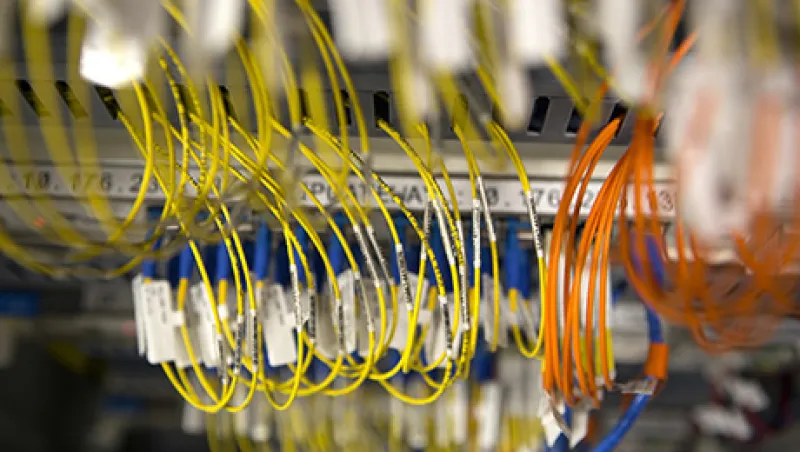Regulatory reform is prompting unprecedented change in clearing and the upshot of it will be a very different clearing regime from what we have today. The overall aim is to create greater stability and transparency. The challenge lies in how to achieve this while balancing the needs of participants with those of the market and society as a whole. Developments in three areas stand to have the greatest impact on clearing: capital efficiencies, investor protection and technologic innovation.
As market participants look for ways to do more with less, how to best use capital will remain an important consideration. Today this is largely related to margin levels. But that’s all about to change. With the advent of mandatory clearing rules, requisite margin levels will be a bigger consideration, given that participants will clear more products while having to hold larger amounts of capital.
Cross-margining has emerged as a valuable tool on this front, whether it’s cross-margining across over-the-counter (OTC) and exchange-traded products or net margining across multiple asset classes. It is where many central counterparty clearing houses (CCPs) have been able to differentiate their offerings based on risk appetites. Regulations will harmonize margin levels. Therefore, most participants could, eventually, achieve the same levels of efficiency through margining, regardless of where they clear trades. As a result, participants will be on the hunt for other ways to make the best use of capital.
Collateral management will also need to evolve and will help drive future capital efficiencies. Opinions differ on whether there will be a collateral shortfall and the reality will depend largely on how well these assets are managed. Therefore, the ability to optimize collateral in ways that are not related to margins will become highly valued. Several possibilities could emerge.
One is integrated calculations between margin portfolios and collateral portfolios. This would allow full offsets in which a participant holds the underlying security when trading, for example, an equity option. Cash optimization is another possibility. Any excess collateral in cash could cover cash settlements while a positive cash settlement could cover the margin requirement.
Better collateral management will depend heavily on technology. Dealing with the complexity of clearing requires greater innovation. This becomes highly relevant when considering open access and interoperability. The drive to increase competition in clearing means that innovation in collateral management will have a marked impact on what participants choose to clear and, importantly, where they clear them.
Automation, standardization and anything that improves efficiency will also drive collateral management. Connectivity and the continual push for straight-through processing is one example. Getting rid of manual intervention of flows between the participant, client and CCP could well push through the standardization of FIXML (financial information exchange XML) and FpML (financial products markup language) and SWIFT-based messaging. Automation would also deliver further capabilities such as direct debit or credit transactions that automate the repayment of any cash surplus on a member’s account.
When creating stability, the future of clearing must support a fundamental principle: Investors should not have to bail out a defaulting CCP. Client segregation is a crucial part of this. The reason that firms are still picking through the collateral held at Lehman Brothers Holdings and MF Global is evidence that segregated clearing was not in place.
Regulations now mandate client segregation; however, participants will demand even more protection than the regulatory minimum. The Omnibus model, with CCPs holding one account for multiple clients, is a case in point. It falls short of truly mitigating risk, as it lacks transparency around clients’ collateral and positions.
The industry has a false impression that true segregation is costly and complex. In reality, it is not only a must-have — ensuring stability and investor protection — but also entirely within reach. If CCPs eventually catch up on client segregation, then recovery and resolution will offer the real opportunity for change in investor protection. Getting this right could have the greatest effect on reducing systemic risk.
Opinion remains divided on market infrastructure. On one hand, a market with one or two large CCPs would be better for capital efficiency. On the other hand, it creates huge systemic risk because a single CCP default would have a massive impact on the financial markets. An array of mid- and large-size CCPs would allow for more recovery options — which would be of far more benefit to markets and to society. The roadmap to achieving this will need to take interested parties' commercial interests into account. It should, however, develop organically out of regulations that encourage market competition.
Every recovery situation will be unique, so having a one-size-fits-all approach could have unwanted negative consequences. For example, forcing mandatory transfer of positions to another CCP would create additional risks if that CCP is not equipped to take them on. A more flexible solution would be a voluntary recovery arrangement for fungible OTC contracts cleared by all CCPs. This would allow the market to find the best fit in any particular scenario.
Ultimately, technology will be the force behind any developments in clearing. What’s certain is that change is inevitable. Greater competition through regulation is a positive step — and with that comes greater choice. Participants will be looking for ways to tackle costs and deliver the most efficient and effective clearing processes. As a result, the industry must collaborate and innovate if it is to promote competition and make a more stable and transparent market a reality.
Hans-Ole Jochumsen is the president of global trading and market services for the Nasdaq OMX Group in Stockholm.
Get more on trading and technology.






